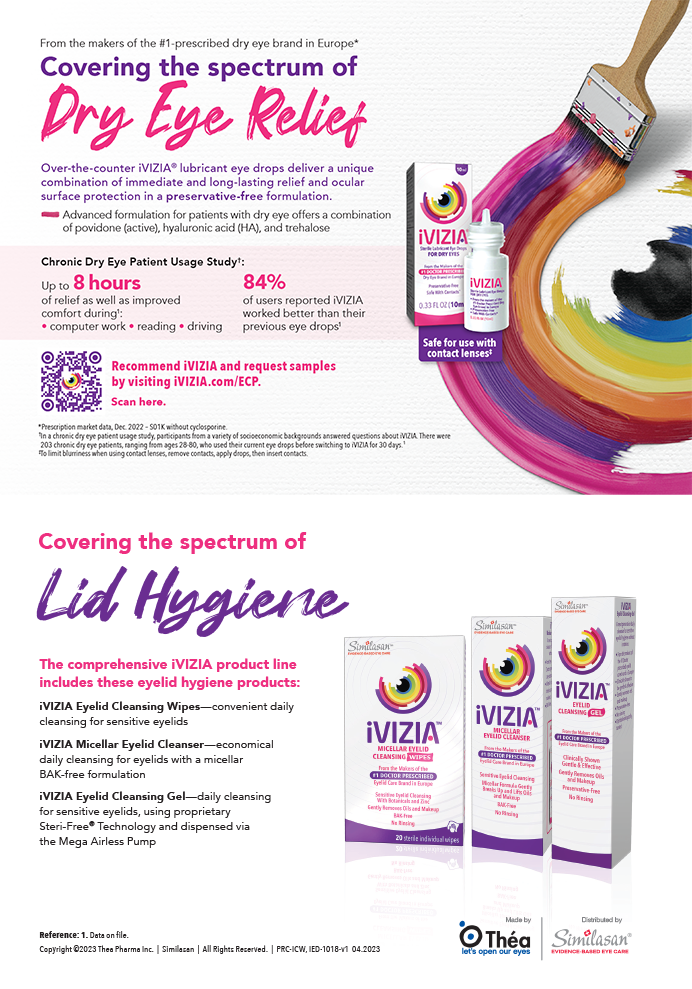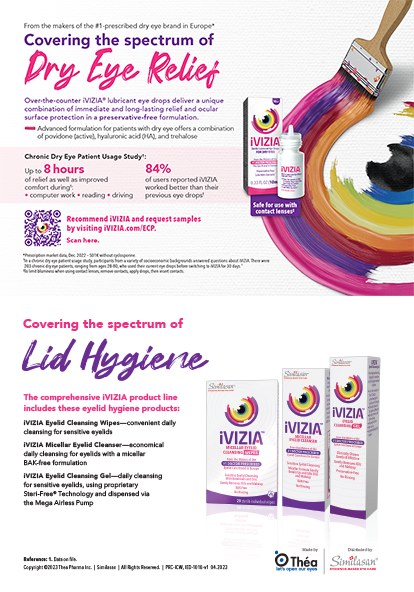One of the great challenges in cataract surgery is the management of pre-existing astigmatism. This case demonstrates the use of the AcrySof Single-Piece Toric IOL (Alcon Laboratories, Inc., Fort Worth, TX).
SURGICAL TECHNIQUE
This particular patient presented with bilateral cataracts and corneal astigmatism of 2.00 D at the 30º axis. In my normal surgical course, I preoperatively use a gentian violet marking pen to make reference marks on the conjunctiva at the 3- and 9-o'clock positions (Figure 1). Later, I use these to mark the axis of astigmatism. After making this marking, I load the Single-Piece Toric IOL into the cartridge and insert it into the patient's eye using a Monarch insertion instrument (Alcon Laboratories, Inc.) in a conventional fashion. Three dots on the AcrySof Toric IOL mark the axis of the steep IOL meridian, which will align with the marks I made on the conjunctiva at 30º. After inserting the lens into the capsular bag, I remove the viscoelastic and rotate the lens to align the dots on the IOL with the marks on the conjunctiva. Then, I measure the incision size with Steinert gauges and determine the wound length to be 2.9 mm. Next, I insert an irrigation cannula through a paracentesis with one hand while using a Sinskey hook through another paracentesis site to keep the eye inflated. I can now easily rotate the IOL into the proper position (Figure 2)—a maneuver that would have been difficult to perform without irrigation and the adequate space maintenance that irrigation allows. Subsequently, I align the dots on the lens with the previously placed corresponding marks on the conjunctiva that represent the desired axis.
To complete the procedure, I perform a final check to ensure proper alignment of the marks on the IOL with those on the conjunctiva. I remove the irrigation cannula and irrigate the paracenteses with BSS (Alcon Laboratories, Inc.) to create a watertight closure. The shrinkwrap effect of the capsule will ensure that the lens stays in place and does not rotate.
TRIAL EXPERIENCE
With more than 100 patients implanted thus far in the phase III FDA clinical trial of the AcrySof Single-Piece Toric IOL, the average rotation with the lens is approximately 4º. This amount of rotation is insignificant, and the IOL has produced excellent UCVA in the patients studied to date. I look forward to FDA approval of this lens once the study is complete.


